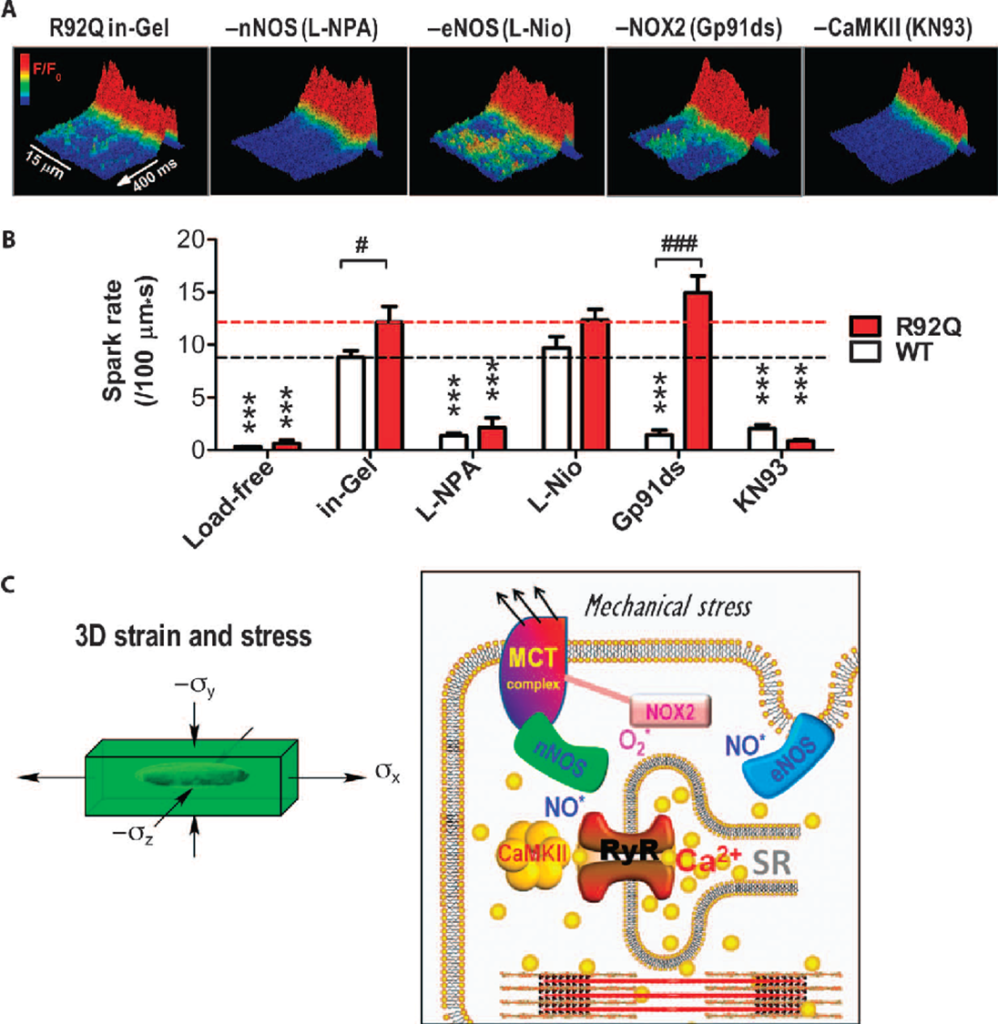Research
Mechano-Chemo-Transduction
Cardiomyocytes contract against a mechanical load during each heartbeat. We developed a 3-D Cell-in-Gel system top apply mechanical afterload during cardiomyocyte contraction. We discovered that the nitric oxide synthase 1 (NOS1, or nNOS) was involved in transducing mechanical load to alter Ca2+ signaling in cardiomyocytes. Mechanical load increased the systolic Ca2+ transient, which enhanced contractility to counter the load increase. Mechanical load also caused spontaneous Ca2+ sparks and waves during diastole that are arrhythmogenic. We also identify NOS1, Nox2, and CaMKII as chemo-transducers in the mechano-chemo-transduction, which provides new therapeutic targets for treating cardiac arrhythmias and heart failure associated with high mechanical stresses (i.e., high blood pressure, HFrEF, HFpEF, etc.)

| 1. | Jian, Z, Han, H, Zhang, T, Puglisi, J, Izu, LT, Shaw, JA, Onofiok, E, Erickson, JR, Chen, YJ, Horvath, B, Shimkunas, R, Xiao, W, Li, Y, Pan, T, Chan, J, Banyasz, T, Tardiff, JC, Chiamvimonvat, N, Bers, DM, Lam, KS, Chen-Izu, Y. Mechanochemotransduction during cardiomyocyte contraction is mediated by localized nitric oxide signaling. Science Signaling, 7(317): ra27 (2014). |